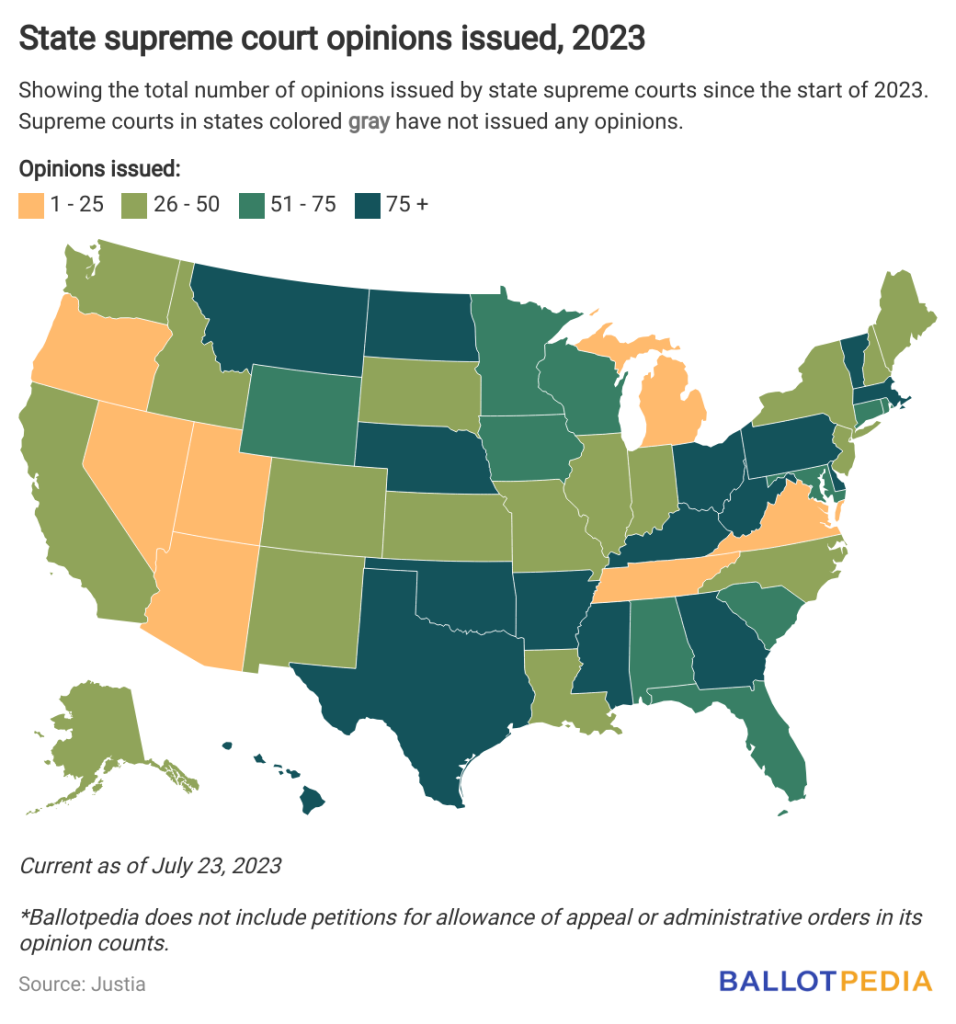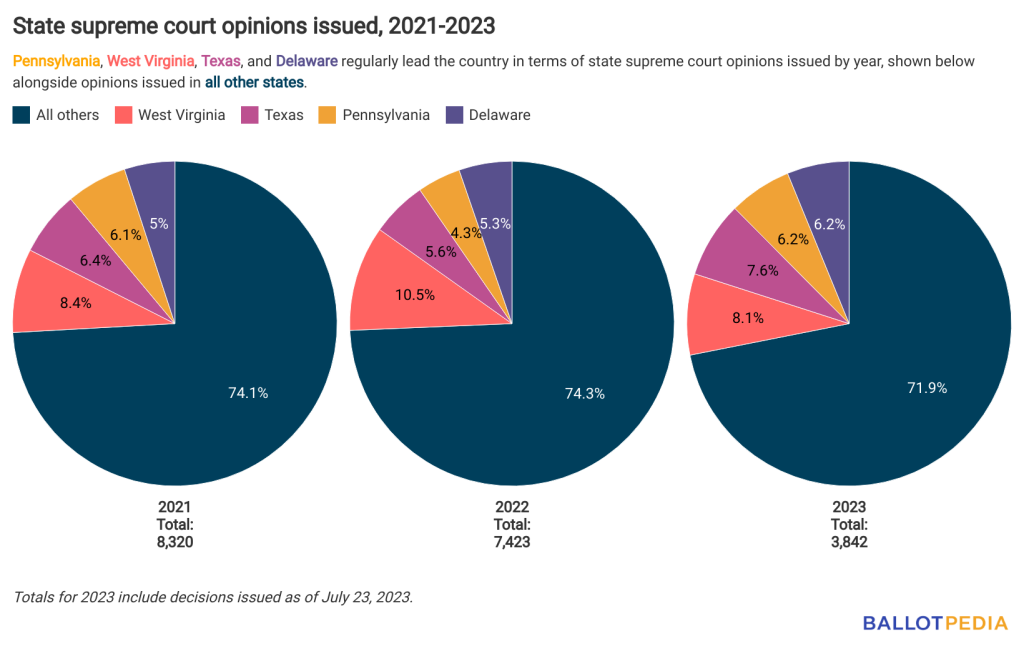State supreme courts issued 192 opinions in the two week period from July 10 to July 23. The Delaware Supreme Court issued 26 opinions more than any other state, followed by Pennsylvania with 17 and Vermont with 13. The last two weeks’ 192 opinions account for 5% of the year-to-date total of 3,842. West Virginia leads with 310 opinions issued since Jan. 1, followed by Pennsylvania with 240 and Delaware with 238.
State supreme courts have issued an average of 132 opinions per week so far this year. This figure is less than the 2022 weekly average of 143 the 2021 average of 160.
Supreme courts in 12 states have issued over 100 opinions each since the start of the year, while courts in eight states have issued fewer than 25.

Some of the state supreme court opinions issued this year include those in:
- Illinois, where the “court ‘respectfully suggested’ that the legislature address the policy concerns inherent in the possibility of awards of substantial damages” in a case involving White Castle’s use of employee biometric data;
- Nevada, where the court held “there is no requirement that an employee’s activities be foreseeable to his employer in order for the employee to recover workers’ compensation benefits.” The case involved an employee’s death while riding an ATV on a business trip; and,
- Oregon, where, in a case involving clothing store Eddie Bauer the court affirmed that a consumer “suffered an ‘ascertainable loss’ when the consumer purchased a product that the consumer would not have purchased at the price that the consumer paid but for a violation of [ORS] 646.608(1)(e), (i), (j), (ee), or (u), if the violation arose from a representation about the product’s price, comparative price, or price history, but not about the character or quality of the product itself.”
Supreme courts in Pennsylvania, West Virginia, Texas, and Delaware regularly end the year as some of the country’s most active courts. Collectively, they accounted for 26% of all opinions issued in 2021 and 2022, and, to date, 28% in 2023.

Every state and the District of Columbia have at least one supreme court, known as a court of last resort. Oklahoma and Texas have two courts of last resort, one for civil cases and one for criminal proceedings. Supreme courts do not hear trials of cases. Instead, they hear appeals of decisions made in lower courts. The number of justices on each state supreme court ranges between five and nine.
In 2020, we conducted a study identifying the partisan balance on every state supreme court. You can find that research here. We also identified which justices ruled together most often in our Determiners and Dissenters report found here.
Learn More






